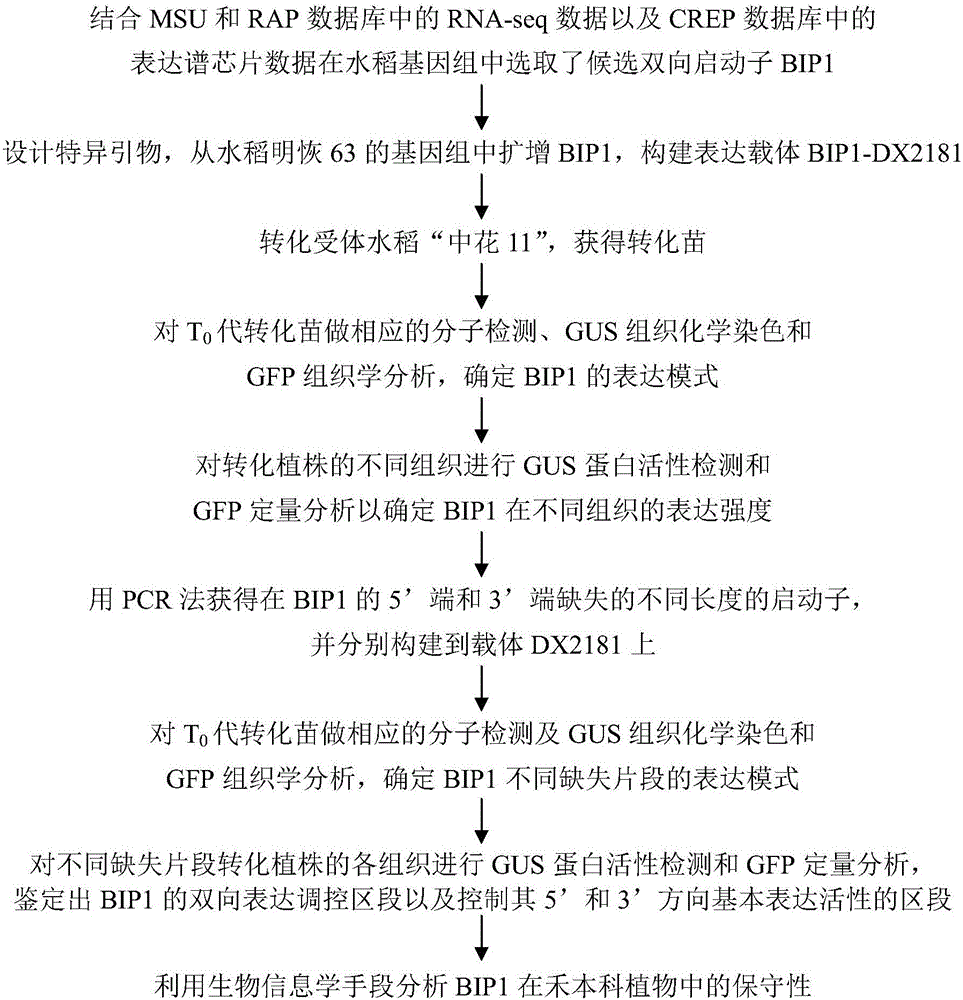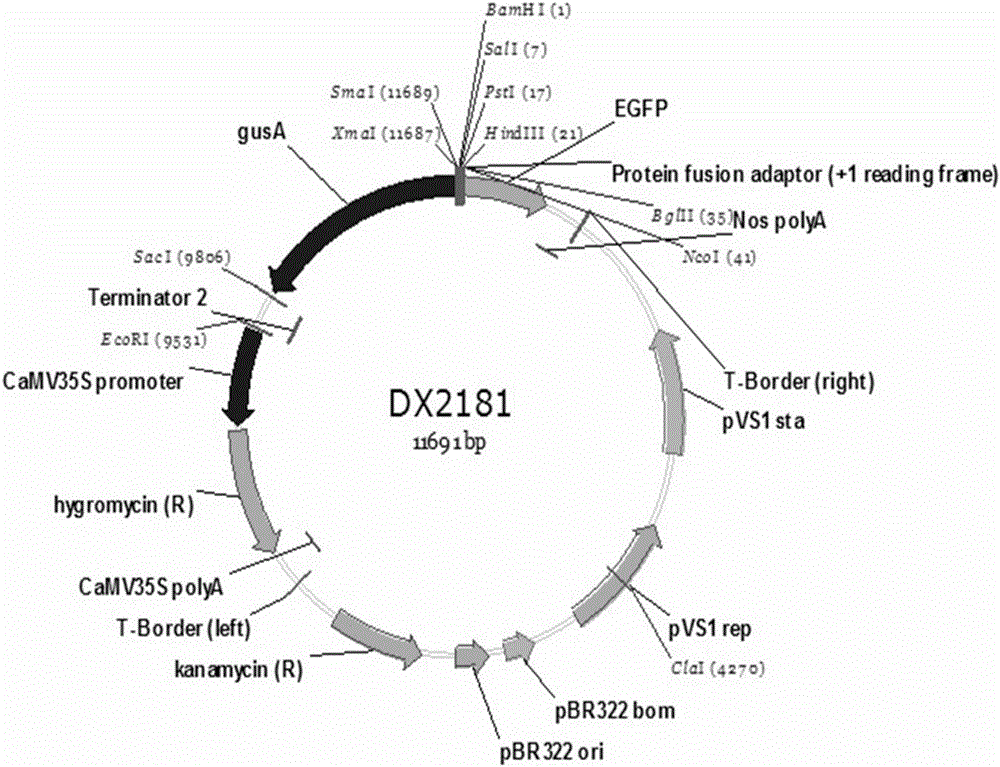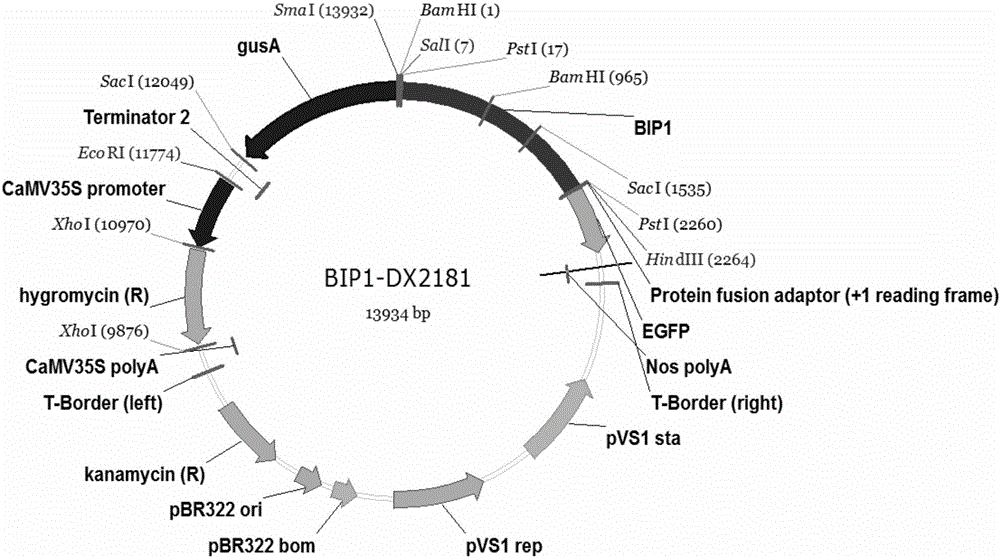Isolation and cloning and function analysis of endogenous bidirectional expression promoter of rice
A bidirectional promoter and promoter technology, which is applied in the determination/inspection of microorganisms, biochemical equipment and methods, DNA/RNA fragments, etc., to achieve the effect of efficient bidirectional promoter resources
- Summary
- Abstract
- Description
- Claims
- Application Information
AI Technical Summary
Problems solved by technology
Method used
Image
Examples
Embodiment 1
[0030] Embodiment 1: Construction of plant expression vector
[0031] Unless otherwise specified, the reference methods and corresponding routine operations of molecular biology listed in this manual can be referred to: [J. Sambrook et al., "Molecular Cloning Experiment Guide (Second Edition)", Chinese translation, Science Press, Beijing , 1996 Edition] related information.
[0032] In the present invention, the candidate bidirectional promoters are firstly selected from the RNA-seq data in the MSU and RAP databases and the expression profile chip data in the CREP database. The selection principles are based on: 1. Gene pairs that are adjacent and have a "head-to-head structure" with opposite transcription directions; 2. In the RNA-seq data, the maximum expression value of the gene pair is higher than 10 at the same time; in the expression profile chip data, the gene pair 3. The expression correlation of gene pairs in the RNA-seq data of 95 samples is higher than 0.4. A grou...
Embodiment 2
[0036] Example 2: Agrobacterium-mediated genetic transformation
[0037] The Agrobacterium-mediated genetic transformation method mainly refers to the method shown in the "Agrobacterium-mediated Genetic Transformation Manual" published by the State Key Laboratory of Crop Genetic Improvement, Huazhong Agricultural University (Lin Yongjun et al., 2002). The transformation recipient is the embryogenic callus induced from mature seeds of rice variety Zhonghua 11 (a conventional variety, derived from the Institute of Crop Science, Chinese Academy of Agricultural Sciences). The hygromycin-resistant callus is obtained through precultivation, infection, cocultivation and screening, and then through differentiation, rooting, seedling training and transplanting to obtain transgenic plants. The main steps of the genetic transformation of the present invention, the culture medium and the preparation method thereof are as follows:
[0038] (1) Agrobacterium-mediated genetic transformation...
Embodiment 3
[0136] Embodiment 3: Utilize PCR method to detect transgenic positive plant
[0137] After the transformed seedlings are moved into the greenhouse, wait for them to turn green, then take 1-2cm young leaves from individual plants, extract their genomic DNA, and use the genomic DNA as a template to detect positive plants by PCR. The amplified fragment is a partial fragment of the reporter gene gus, and the fragment size is 699bp. The primer sequences are GUS-F: GGGCGAACAGTTCCTGATTA, GUS-R: AACGTATCCACGCCGTATTC. PCR reaction conditions: 94°C for 5min, 94°C for 50sec, 57°C for 40sec, 72°C for 50sec, 30 cycles, 72°C for 7min. PCR products were detected by 0.8% agarose gel electrophoresis. to all T 0 The generation plants were tested by PCR, and the false positive transformed plants were eliminated according to the test results.
[0138] Genomic DNA was extracted using a small amount of leaf genomic DNA extraction method: take an appropriate amount of young leaves, add 800 μl 1....
PUM
 Login to View More
Login to View More Abstract
Description
Claims
Application Information
 Login to View More
Login to View More - R&D
- Intellectual Property
- Life Sciences
- Materials
- Tech Scout
- Unparalleled Data Quality
- Higher Quality Content
- 60% Fewer Hallucinations
Browse by: Latest US Patents, China's latest patents, Technical Efficacy Thesaurus, Application Domain, Technology Topic, Popular Technical Reports.
© 2025 PatSnap. All rights reserved.Legal|Privacy policy|Modern Slavery Act Transparency Statement|Sitemap|About US| Contact US: help@patsnap.com



